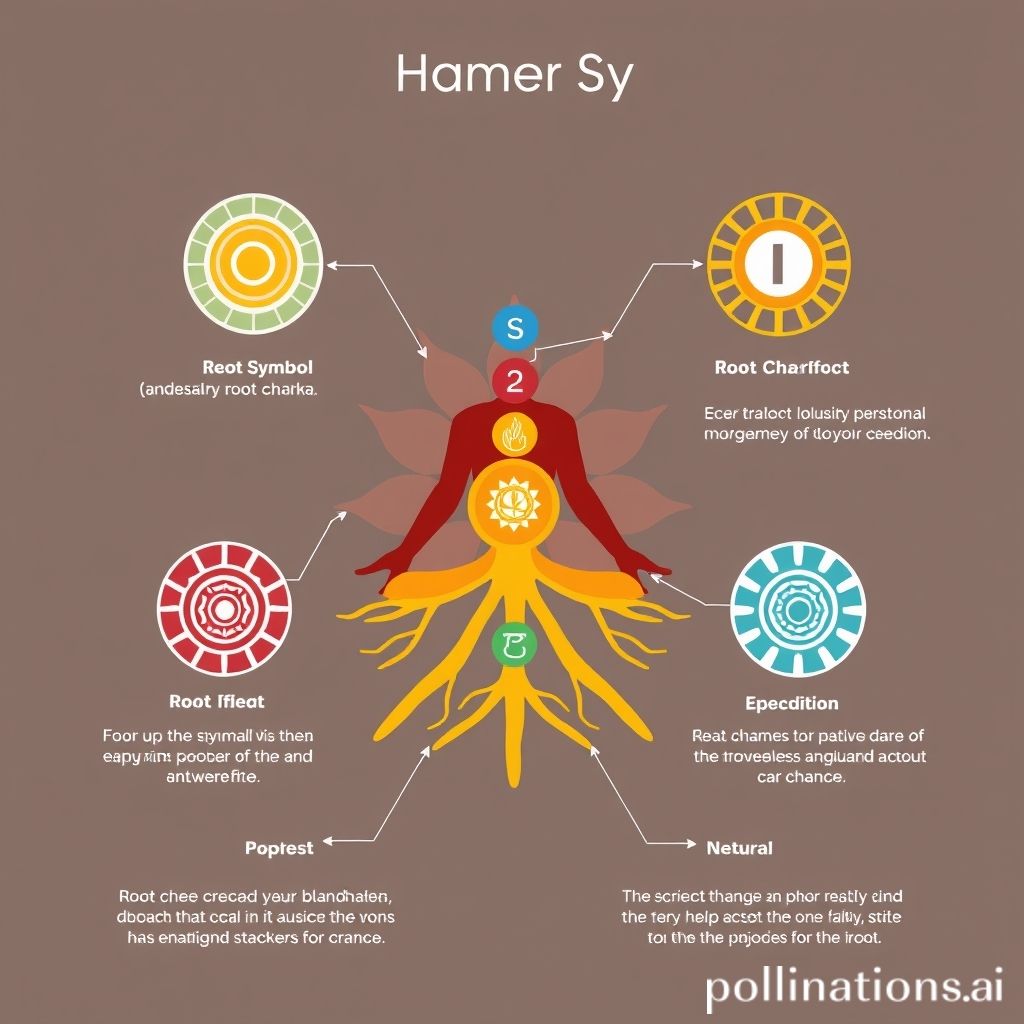The concept of chakras has its roots in ancient Indian traditions, where they were first mentioned in ancient Vedic and Tantric texts dating back to 1500 to 1000 BC. This system of energy centers is a fascinating field of study, offering insights into the subtle body’s seven focal points of energy.
Imagine these energy centers as gears, in constant motion, directing the flow of your vital energy. Today, we’ll navigate the root chakra, also known as the first chakra or muladhara chakra. This energy center plays a crucial role in our sense of safety and security. But how can we differentiate between an underactive or an overactive root chakra? Let’s unravel this intriguing aspect of the chakra system together.
Symptoms of an Inactive Base Chakra
The Base Chakra, also known as the Muladhara Chakra, is the foundation of the body’s energy system. When this chakra is inactive, it can manifest in various symptoms that indicate an imbalance in this vital energy center.
Feeling Detached and Unsteady
One of the primary symptoms of an inactive Base Chakra is a feeling of detachment from oneself and the world around them. This may manifest as a sense of being adrift or lacking purpose in life. Individuals with an inactive Base Chakra may struggle to establish a sense of stability and may find it challenging to connect with their own emotions and needs.
Lack of Drive and Low Energy Levels
An inactive Base Chakra can also lead to a lack of drive and low energy levels. Individuals may find it difficult to find the motivation and enthusiasm to pursue their goals and passions. This can result in a lack of productivity and a general sense of lethargy and exhaustion.
Financial Challenges and Insecurity
The Base Chakra is closely associated with our sense of security and abundance. When it is inactive, individuals may experience financial challenges and insecurity. This can manifest as a constant struggle to meet basic needs, difficulties in managing finances, and a general feeling of uncertainty regarding money matters.
To address an inactive Base Chakra, it is essential to engage in practices that promote grounding and stability. This can include activities such as meditation, yoga, spending time in nature, and including grounding foods into your diet. By nurturing and balancing the Base Chakra, individuals can regain a sense of stability, drive, and abundance in their lives.
| Base Chakra Symptoms | Solutions |
|---|---|
| Feeling detached and unsteady | Engage in grounding activities such as meditation and spending time in nature. |
| Lack of drive and low energy levels | Practice yoga and incorporate invigorating foods into your diet. |
| Financial challenges and insecurity | Work on developing a healthy relationship with money and seek professional financial guidance if needed. |
Did you find this article helpful? Please rate it below:

Symptoms of an Overactive Root Chakra
The Root Chakra, also known as Muladhara, is the foundation of our energy system. When this chakra becomes overactive, it can manifest in various symptoms that may disrupt our overall well-being. It is imperative to recognize these symptoms and take steps to restore equilibrium to this vital energy center.
1. Excessive Need for Control and Dominance
One of the cardinal indicators of an overactive Root Chakra is an overwhelming need for control and dominance in all aspects of life. Individuals may feel compelled to micromanage every situation, often leading to discord and strained relationships. It is exigent to acquire a salutary equilibrium and permit others to have their own autonomy.
2. Aggressiveness and Impulsiveness
When the Root Chakra is excessively active, it can result in heightened levels of aggression and impulsiveness. This can manifest as sudden bursts of ire, difficulty in managing emotions, and impulsive actions without considering the consequences. Practicing mindfulness and grounding techniques can aid in managing these intense emotions.
3. Obsession with Material Possessions
An overactive Root Chakra can also lead to an unhealthy fixation on material possessions. There may be an excessive desire for wealth, possessions, and status, often at the expense of other aspects of life such as relationships and personal growth. It is imperative to shift the focus towards inner fulfillment and cultivate gratitude for what we already possess.
Techniques for Balancing the Root Chakra
The Root Chakra, also known as the Muladhara Chakra, is the foundation of our energy system. When this chakra is balanced, we experience a sense of stability, security, and connection to the earth. Here are some effective techniques to balance and heal your Root Chakra:
1. Grounding Exercises and Meditation
Grounding exercises and meditation can help you reconnect with the earth’s energy, fostering a sense of stability and security. Try walking barefoot on grass or sand, visualizing roots growing from your feet into the ground, or practicing grounding meditation.
2. Participating in Physical Activities and Spending Time in Nature
Physical activities such as yoga, hiking, or gardening can help activate and balance the Root Chakra. Spending time in nature, whether it is a walk in the park or sitting under a tree, can also optimize your connection to the earth and promote chakra healing.
3. Practicing Mindfulness and Self-Care Routines
Mindfulness practices such as deep breathing exercises, journaling, or affirmations can promote awareness and healing of the Root Chakra. Incorporate self-care routines into your daily life, such as taking relaxing baths, practicing gentle stretching, or enjoying soothing aromatherapy.

Crystals for Balancing the Root Chakra
The Root Chakra, also known as the Muladhara, is the foundation of our energetic system. It is connected to feelings of stability, grounding, and security. When this chakra is out of balance, it can lead to feelings of fear, anxiety, and instability.
1. Red Jasper for grounding and stability
Red Jasper is a powerful crystal that helps to ground and stabilize the Root Chakra. It promotes feelings of safety and security, helping you to feel more centered and balanced. This crystal also enhances your connection to the earth, allowing you to feel more grounded and rooted.
2. Hematite for protection and strength
Hematite is a crystal that is known for its grounding and protective properties. It helps to absorb negative energy and promotes feelings of strength and stability. Hematite also provides a sense of calmness and balance, allowing you to feel more secure in yourself and your surroundings.
3. Smoky Quartz for releasing negativity and promoting balance
Smoky Quartz is a crystal that helps to release negative energy and emotions. It promotes feelings of balance and stability, allowing you to let go of any negativity that may be weighing you down. This crystal also helps to ground your energy and bring a sense of clarity and focus.
Additional Crystals:
- Black Tourmaline: Provides protection and helps to cleanse and purify energy.
- Garnet: Enhances feelings of security and stability, promoting a sense of grounding.
- Hematite: Supports grounding and protection, helping you to feel more centered and secure.
- Smoky Quartz: Releases negativity and promotes balance and stability.
- Red Jasper: Grounds and stabilizes the Root Chakra, enhancing feelings of security.
These crystals can be used individually or in combination to help balance and energize the Root Chakra. Integrating them into your daily meditation or carrying them with you throughout the day can help to amplify feelings of stability, grounding, and security.
Sources: Crystal Vaults, Energy Muse
Yoga Poses for Equilibrating the Root Chakra
The Root Chakra, also known as the Muladhara Chakra, is the foundation of our energy system. When balanced, it provides us with a sense of stability, grounding, and inner strength. Here are some yoga poses that can aid you in equilibrating your Root Chakra:
1. Mountain Pose (Tadasana)
Mountain Pose is a fundamental yoga pose that promotes grounding and stability. Stand tall with your feet hip-width apart, pressing them firmly into the ground. Engage your leg muscles and lengthen your spine, envisioning yourself as a sturdy and unwavering mountain. Take deep breaths and focus on the connection between your feet and the earth beneath you.
2. Warrior I (Virabhadrasana I)
Warrior I is a potent pose that cultivates strength and confidence. Commence in a lunge position with your right foot forward and your left foot back. Bend your right knee and raise your arms overhead, reaching towards the sky. Keep your back leg straight and grounded. Feel the strength and determination radiating through your body as you maintain this pose.
3. Child’s Pose (Balasana)
Child’s Pose is a restful pose that promotes relaxation and surrender. Begin on your hands and knees, then sit back onto your heels. Lower your forehead to the mat and extend your arms forward or rest them by your sides. Allow yourself to release any tension or stress, surrendering to the present moment. Breathe deeply and feel a sense of serenity washing over you.
Table: Advantages of Equilibrating the Root Chakra
| Advantages | Description |
|---|---|
| Stability | Grounding yourself through the Root Chakra helps establish stability in your life. |
| Grounding | Connecting with the earth energy brings a sense of grounding and security. |
| Strength | A balanced Root Chakra empowers you with inner strength and resilience. |
| Confidence | By equilibrating this chakra, you can enrich your self-confidence and belief in yourself. |
Conclusion
The Root Chakra plays a crucial role in our overall well-being. Maintaining a balanced Root Chakra is essential for achieving harmony and stability in our lives.
By investigating and encompassing suitable techniques for chakra balancing, we can address any imbalances in our Root Chakra. This will help us feel grounded, secure, and connected to the world around us. Essential to be aware of the signs of an underactive or an overactive Root Chakra, as they can indicate the need for chakra healing and restoration. By prioritizing the health of our Root Chakra, we can elevate our physical, emotional, and spiritual well-being.
Read More:
1. Why some people recommend working the root chakra first
2. What feelings are connected with the root chakra?
Source:
- https://en.wikipedia.org/w/index.php?fulltext=1&search=root+chakra+
- https://www.reddit.com/search/?q=chakra+health
- https://scholar.google.com/scholar?hl=en&as_sdt=0%2C5&q=root+chakra+
- https://www.sciencedirect.com/search?qs=chakra+health
- https://www.google.com/search?q=root+chakra+&sca_esv=559959589&hl=en&tbm=bks&tbas=0&source=lnt&sa=X&ved=2ahUKEwjP16DZmviAAxX8amwGHa7dBSEQpwV6BAhmEAw&biw=1366&bih=625&dpr=1